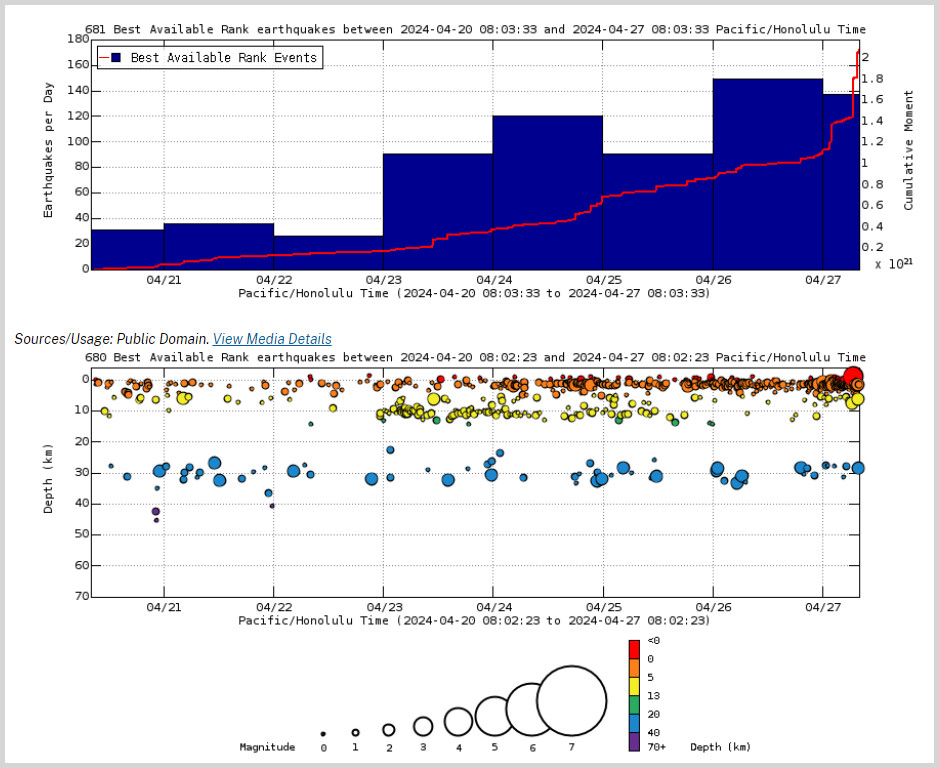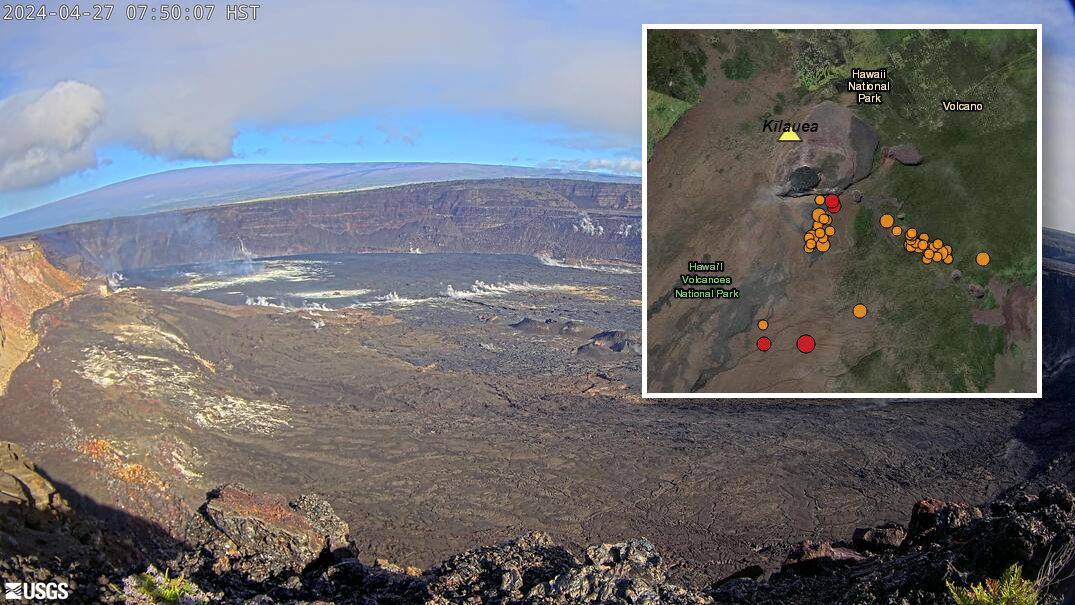(BIVN) – Kīlauea volcano is not erupting, but there has been an increase in seismicity in the summit area over the last few weeks. Saturday is on pace for the highest number of earthquakes in weeks.
Shallow earthquakes have also been observed beneath the upper East Rift Zone over the past several days, and two rockfalls were detected at Puʻuʻōʻō Thursday night into Friday.
The USGS Volcano Alert Level is currently at ADVISORY.
From the USGS Hawaiian Volcano Observatory on Friday:
Earthquake activity has increased over the past month beneath the summit of Kīlauea and south of the caldera. Activity has alternated between typical shallow, 0.5-2.5 miles (1-4 km) earthquakes beneath the south caldera region and 3-6 miles (5-10 km) deep earthquakes directly beneath Kīlauea caldera. Most of these earthquakes have been smaller than magnitude-2. Kīlaueaʻs summit remains inflated. Overall ground deformation rates remain low, with ongoing inflation of the summit and uplift south of the caldera. Tiltmeters near Sand Hill and Uēkahuna showed no significant changes over the past day. Sulfur dioxide (SO2) gas emission rates remain low. An SO2 emission rate of approximately 52 tonnes per day was recorded on April 23.

(USGS) Above Top: Number of earthquakes per day during the past week (blue bars). The red line is the cumulative moment (energy) release. Bottom: Depth of earthquakes during the past week in the area shown on the map above. Depth is reported relative to sea level, which is equal to a depth of zero on the above plot. On both figures, circle-size represents magnitude, and color indicates depth.
UPDATE – (Saturday, April 27) – From the USGS Hawaiian Volcano Observatory on Saturday, April 27:
Rift Zone Observations: An increasing number of shallow earthquakes, 0.5-2.5 miles (1-4 km) deep, have been observed beneath the upper East Rift Zone over the past several days. Seismicity beneath the upper East Rift Zone increased significantly overnight, with more than 100 earthquakes detected over the past 8 hours. Most of these earthquakes have been smaller than magnitude-2 and located between Puhimau Crater and Hilina Pali road. Seismicity in Kīlauea’s Southwest Rift Zone remains low overall. No unusual activity has been noted along the middle and lower sections of Kīlauea’s East Rift Zone. Measurements from continuous gas monitoring stations downwind of Puʻuʻōʻō in the middle East Rift Zone—the site of 1983–2018 eruptive activity—continue to be below detection limits for SO2, indicating that SO2 emissions Puʻuʻōʻō are negligible.
Analysis: At this time, it is not possible to say with certainty if this increase in activity will lead to an eruption in the near future – or simply remain confined below ground. However, an eruption in Kīlauea’s summit region, within Hawai‘i Volcanoes National Park, is one potential outcome.


by Big Island Video News8:19 am
on at
STORY SUMMARY
HAWAIʻI VOLCANOES NATIONAL PARK - Increased seismicity over the past month indicates heightened activity beneath the summit of Kīlauea.